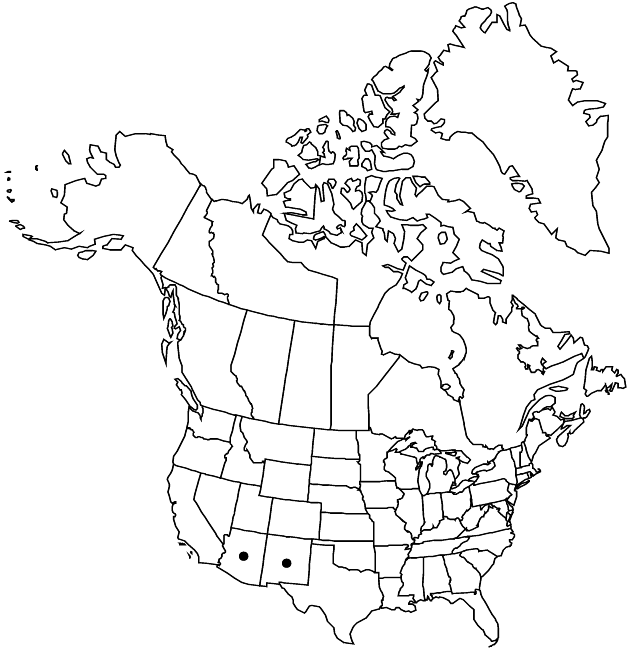Difference between revisions of "Brickellia amplexicaulis"
Proc. Amer. Acad. Arts 47: 199. 1911.
FNA>Volume Importer |
FNA>Volume Importer |
(No difference)
| |
Revision as of 18:46, 24 September 2019
Perennials, 100–200 cm. Stems branched from bases, pubescent and gland-dotted. Leaves opposite; petioles 0–1 mm; blades 3-nerved from bases (pinnately-veined distally), lanceolate to oblong, 40–160 × 10–75 mm, bases rounded to cordate (clasping), margins crenate to serrate, apices acute, faces densely to sparsely pubescent and stipitate-glandular. Heads in paniculiform arrays. Peduncles 7–25 mm, densely stipitate-glandular. Involucres cylindric to campanulate, 9–13 mm. Phyllaries 18–24 in 4–5 series, greenish, often purple-tinged, 3–8-striate, unequal, margins narrowly scarious (apices acute to acuminate); outer ovate (6–8-striate, sparsely glandular at apices), inner narrowly lanceolate (3–4-striate, glabrous). Florets 13–22; corollas pale yellow or cream, often purple- or red-tinged, 6–8 mm. Cypselae 2.8–4 mm, densely pubescent to hirtellous; pappi of 35–60 white, barbellulate bristles.
Phenology: Flowering Sep–Dec.
Habitat: Rocky or grassy montane slopes, riparian habitats
Elevation: 700–1900 m
Discussion
Brickellia amplexicaulis is known from se Arizona and sw New Mexico.
Selected References
None.
